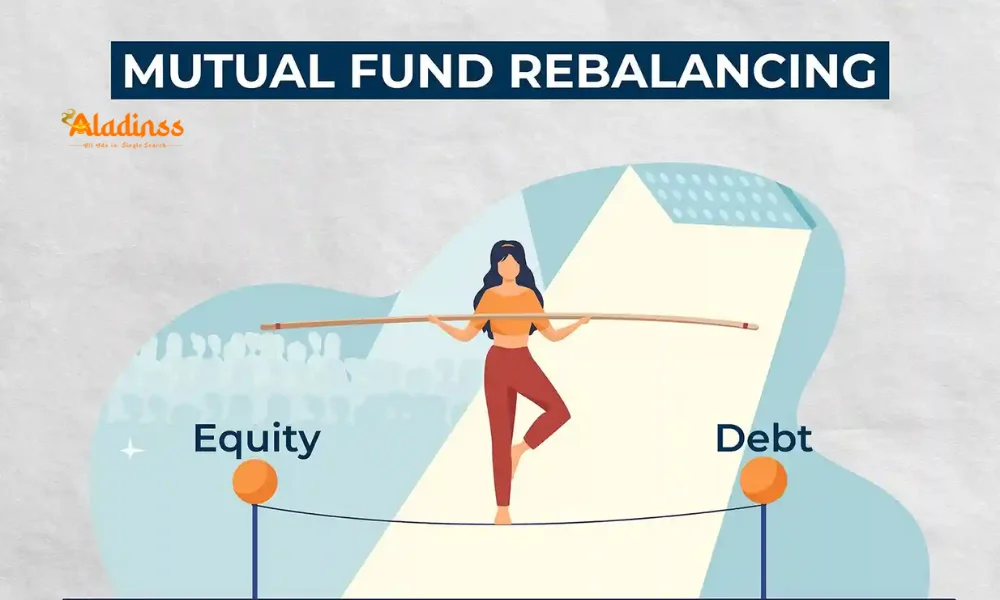Rebalance Mutual Fund Portfolio Guide

How to Rebalance Your Mutual Fund Portfolio for Optimal Returns
Rebalancing your mutual fund portfolio is crucial for aligning investments with your financial goals and risk tolerance. Many investors accumulate too many funds due to market trends or impulsive decisions, resulting in a cluttered portfolio that mimics an index but incurs high fees. Simplifying your holdings requires a disciplined approach to evaluate and sell underperforming or misaligned funds. This guide outlines a strategic framework to streamline your mutual fund investments, focusing on goals, performance, investment style, overlap, and fund size, ensuring you optimize returns while maintaining portfolio clarity in 2025.

A well-balanced mutual fund portfolio is not about owning numerous funds but about holding a select few that align with your objectives. Over time, market cycles and personal circumstances shift, necessitating periodic reviews to eliminate redundancy and enhance efficiency. By focusing on data-driven decisions and avoiding emotional reactions to market volatility, you can achieve a portfolio that delivers consistent returns without unnecessary complexity.
Aligning Sales with Financial Goals and Emergencies
The foundation of any portfolio rebalancing strategy lies in defining your intent. If you face an urgent need for liquidity—such as funding a home purchase, wedding, or medical emergency—redeem only what’s necessary to meet that goal. Avoid liquidating funds based on short-term market fluctuations or news-driven panic, as this often leads to regrettable decisions. For example, redeeming a large-cap fund during a temporary dip could lock in losses, undermining long-term wealth creation. If no immediate financial need exists, staying invested is typically the wiser choice.
When evaluating funds for sale, prioritize your financial objectives and time horizon. For instance, if your goal is a child’s education in five years, focus on funds that match that timeline rather than chasing the latest high-flyers. Emotional discipline is key—ignore short-term volatility and focus on whether the fund serves your broader strategy. This approach ensures your mutual fund investments remain purposeful and aligned with your life’s milestones.
Also Read: Israel-Hamas Ceasefire Boosts Stocks 2%
Identifying and Selling Underperforming Funds
Performance evaluation is a cornerstone of mutual fund rebalancing. Chasing top performers annually often leads to portfolio bloat and inconsistent returns. Instead, use a data-driven approach by comparing a fund’s five-year Compound Annual Growth Rate (CAGR) against its benchmark and category average. For instance, consider a mid-cap fund returning 23.5% CAGR over five years, while its benchmark, the Nifty Midcap 150 TRI, delivered 26.8%, and the category average was 25.2%. If the fund consistently lags both metrics, it’s a candidate for exit.
- Compare five-year CAGR to benchmark (e.g., Nifty 50 TRI for large-cap funds).
- Check category average to gauge peer performance.
- Exit funds underperforming both metrics for two consecutive years.
- Replace with funds showing consistent outperformance or lower expense ratios.
This methodical approach prevents you from holding onto laggards that drain potential returns. Always review performance over a meaningful period, as short-term dips may not reflect a fund’s true potential. By focusing on long-term data, you can make informed decisions to optimize your mutual fund portfolio.
Matching Investment Style to Your Risk Tolerance
Investment style significantly impacts your ability to stay invested during market cycles. Growth funds, often heavy in small-cap or sector-specific stocks, can be volatile, offering sharp gains but also prolonged drawdowns. Conversely, value funds may underperform during bull markets but require patience for eventual outperformance. Choosing a fund misaligned with your temperament can lead to premature exits, disrupting your financial plan.
For example, if you’re risk-averse and anxious during market corrections, a growth-oriented small-cap fund might not suit you. Instead, a balanced or large-cap fund could provide stability. Assess your comfort with volatility and select funds that you can hold confidently through market ups and downs. This alignment enhances your portfolio’s resilience and supports long-term mutual fund investment success.
Eliminating Portfolio Overlap for True Diversification
A common mistake is assuming multiple funds across categories ensure diversification. However, significant portfolio overlap can make your holdings behave like a single fund, increasing costs without adding value. For instance, if a large-cap fund and a flexi-cap fund share 55% of their holdings, you’re essentially paying double fees for similar exposure. Use portfolio analysis tools to identify overlap percentages.
- Check overlap using fund fact sheets or tools like Morningstar.
- If overlap exceeds 50–60%, sell the fund with the higher expense ratio.
- For 30–50% overlap, retain the flexi-cap fund for broader market coverage.
- Prioritize funds with distinct sector or market-cap allocations.
Reducing overlap streamlines your portfolio, lowers costs, and enhances true diversification. A well-diversified mutual fund portfolio should cover different market segments without redundancy, ensuring each fund contributes uniquely to your financial goals.
Evaluating Fund Size and Strategy Adherence
The size of a fund’s Assets Under Management (AUM) can impact its performance, especially for mid-cap and small-cap funds. When a small-cap fund’s AUM exceeds ₹25,000 crore or a mid-cap fund surpasses ₹35,000 crore, managers may shift toward large-cap stocks to manage liquidity, diluting the fund’s original mandate. This shift undermines the high-growth exposure investors seek from these categories.
Review the fund’s portfolio to ensure at least 80% of its assets remain in the intended market segment. If a small-cap fund allocates heavily to large-caps, consider switching to a fund that adheres to its stated strategy. Staying true to the fund’s purpose is critical for achieving expected returns and maintaining portfolio integrity.
Avoiding Over-Diversification and Excessive Concentration
A balanced mutual fund portfolio avoids extremes of concentration or over-diversification. Funds with over 60% of assets in their top three sectors are prone to volatile swings, tying returns to specific market cycles. Conversely, funds holding 80–100 stocks often mimic an index, negating the benefits of active management while charging higher fees.
- Check sector allocation; top three sectors should not exceed 60%.
- Avoid funds with 80+ stocks unless they’re index funds.
- Opt for funds with 30–50 stocks for focused yet diversified exposure.
- Ensure active funds justify their fees with distinct strategies.
A purposeful portfolio balances selectivity and diversification, ensuring each fund serves a distinct role. Regularly review holdings to eliminate those that stray from this balance, enhancing overall performance.
Steps to Simplify and Rebalance with Confidence
Rebalancing a mutual fund portfolio is a deliberate process that requires patience and clarity. Aim to consolidate your holdings into three to four funds that reflect your risk profile, investment horizon, and financial objectives. This streamlined approach reduces complexity, lowers costs, and boosts conviction in your investment choices.
- Assess all funds against performance, style, overlap, and AUM.
- Sell underperformers or redundant funds over a few months to avoid tax shocks.
- Reinvest proceeds into funds aligned with your goals and market outlook.
- Monitor portfolio quarterly to stay on track with your strategy.
In 2025, as markets evolve, disciplined rebalancing ensures your mutual fund portfolio remains agile and effective. By focusing on quality over quantity, you can achieve financial goals with fewer, more impactful funds. The hallmark of a savvy investor is not the number of funds owned but the clarity and purpose behind each holding.
Comment / Reply From
No comments yet. Be the first to comment!








